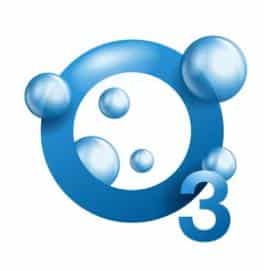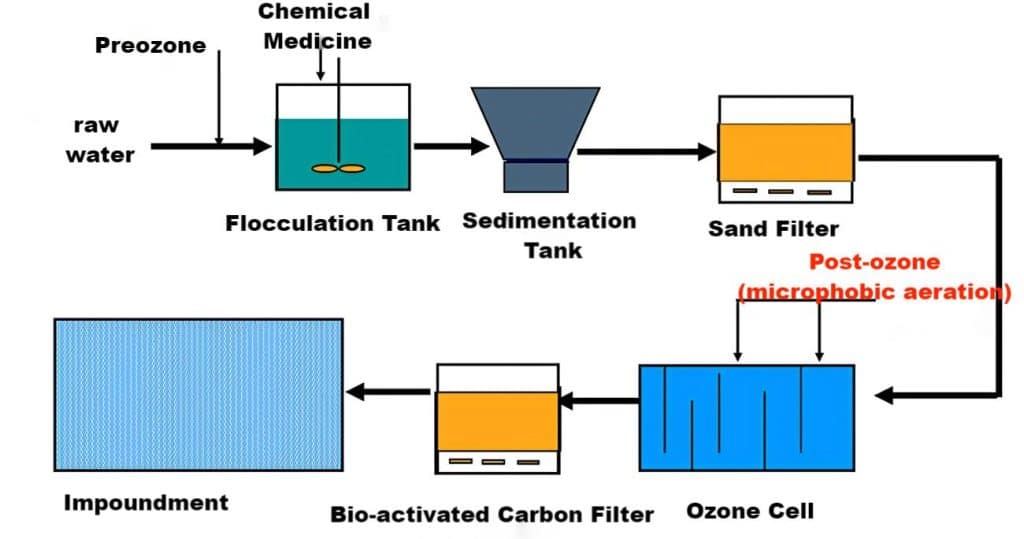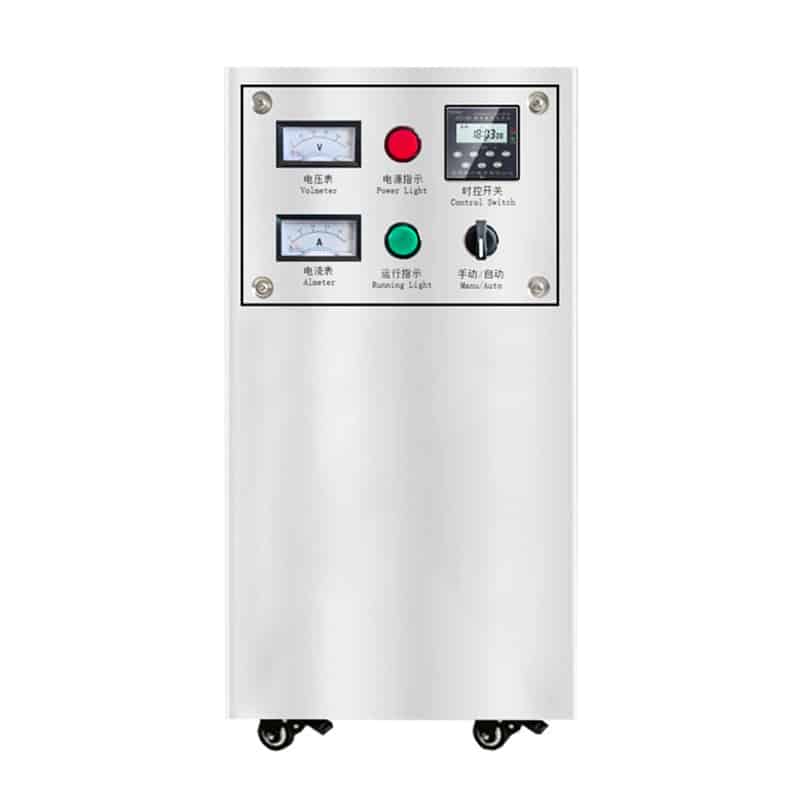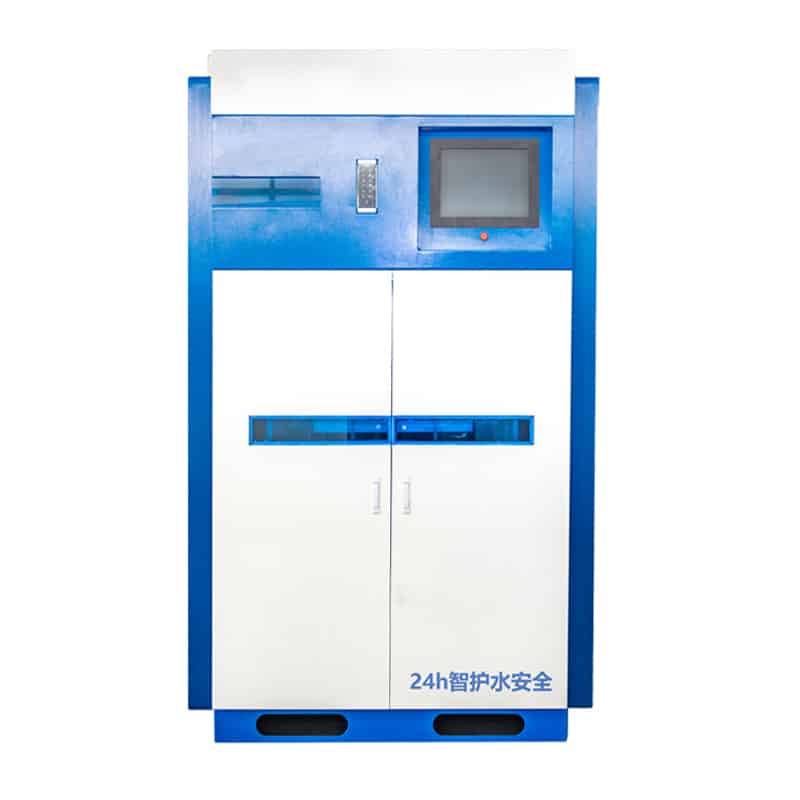Ozone is a gas that occurs naturally in the Earth’s atmosphere and is also one of the most powerful oxidizers in nature. It plays a key role in the upper atmosphere, filtering out the sun’s ultraviolet rays and protecting the Earth from harmful radiation. However, at the surface, ozone’s applications are just as important. Through ozonated water treatment, ozone demonstrates a wide range of uses in ensuring clean drinking water, not only for commercial but also for domestic use. This treatment takes advantage of the powerful oxidizing properties of ozone to effectively eliminate microorganisms, organic matter, and odors, providing an efficient and reliable method for water purification.
What is ozone?
Ozone is a gas composed of three oxygen atoms (O3). Normally, oxygen (O2) consists of two oxygen atoms, whereas ozone consists of three oxygen atoms and therefore has different chemical properties.

Ozone usually exists as a pale blue gas with a peculiarly irritating odor. It exists in nature in the atmosphere in the form of the ozone layer, which is found mainly in the stratosphere and the stratosphere in the Earth’s upper atmosphere. The ozone layer is located in the stratosphere of the Earth’s atmosphere and filters out most of the sun’s ultraviolet rays, protecting life on Earth from the harmful effects of ultraviolet radiation.
At the surface, ozone can also be generated and utilized artificially. Ozone is widely used for water treatment, air purification, disinfection, and industrial purposes. Due to its strong oxidizing properties, ozone plays an important role in eliminating odors, removing bacteria, and oxidizing organic substances.
How does ozone work?
Ozone is known for its powerful oxidizing properties, which are mainly achieved through oxidation reactions. Ozone is a very reactive gas and its working principle is mainly based on oxidation and the ability to break down organic substances.
- Oxidation: Ozone is capable of releasing its third oxygen atom through oxidation, and this additional oxygen atom makes ozone highly reactive. This active ozone can react chemically with other substances, oxidizing them into simpler, more stable compounds.
- Reaction with organic matter: When ozone comes into contact with organic matter, its extra oxygen atoms react chemically with the organic molecules, breaking them down into smaller, simpler, harmless substances.
- Bactericidal and sterilizing: Ozone also can kill microorganisms. Due to its oxidizing properties, ozone is able to destroy microbial cell membranes and cell walls, which leads to the death of microorganisms, making it very effective in disinfection and sterilization.
Application Areas Of Ozone
- Water Treatment
- Air Purification
- Healthcare
- Industrial Applications
- Environmental Protection
Role Of Ozone In Water Treatment
- Bacteria
- viruses
- Parasites such as Giardia and Cryptosporidium
- Hydrogen sulfide
- Unpleasant taste and odor
- Turbidity
- Iron, manganese and copper (when used in combination with other filtration methods)
As a strong oxidizer and disinfectant, ozone can effectively enhance water quality, purify water sources, eliminate organic substances and microorganisms, and make water more suitable for drinking and industrial use. Its use requires strict control of concentration and reaction time to ensure that the treated water quality meets safety standards.
Advantages And Disadvantages Of Ozone Water Treatment
| Advantages | Disadvantages |
| Highly efficient oxidizing and disinfecting effect | The stability of ozone is poor, need to use immediately |
| Can effectively remove microorganisms and organic pollutants | There are certain safety risks for operators |
| Improvement of water quality | High concentration of ozone may be harmful to human body |
| Applicable to a variety of water treatment scenarios | Higher cost and complicated equipment maintenance |
| Degradable taste and odor substances | limited degradation of certain components in water |
Ozone For Sewage Treatment
Wastewater pretreatment: Pretreatment of wastewater is often required prior to ozonization treatment.
- Solids separation:
Raw sewage usually contains solid particles, wastes, and other impurities. Large particles and solids are separated from the effluent by a physical process such as screening, filtration or sedimentation. This is usually accomplished through grids, screens, or grit classifiers that effectively remove larger solid impurities. - Grease removal:
In some cases, domestic sewage may contain grease, fats and other floating oils. To prevent them from interfering with the ozonization process, wastewater chemicals are used for grease removal. - PH adjustment and neutralization:
Certain wastewater may have an abnormal pH, and a pH that is too low or too high may affect the effectiveness of the ozonization reaction. Therefore, before the ozonation treatment, it is sometimes necessary to adjust or neutralize the pH of the sewage to make it reach a suitable range of acidity and alkalinity to ensure the smooth progress of the ozonation reaction. - Removal of large particles:
Prior to ozonization treatment, further removal of larger particles is required to prevent them from preventing adequate mixing of ozone gas and exposure to contaminants. This may require the use of finer filtration or sedimentation processes to ensure that the effluent does not contain large amounts of particulate matter.
Ozone injection: The injection of ozone gas into sewage. This can be accomplished in a variety of ways, for example, by delivering bubbles of ozone gas into the effluent or by using a specific ozone generator.
Oxidation: Ozone reacts with organic material in the wastewater by oxidizing it. Ozone destroys or degrades organic pollutants in the water, converting them into simpler, more harmless substances. In this process, ozone releases oxygen atoms that chemically react with the pollutants to degrade them.
Residual ozone removal: Ozone may remain in the treated wastewater. Methods (such as thiosulfate) are often used to remove the residual ozone to ensure a safe effluent.
Monitoring and regulation: The treated effluent is monitored to ensure that safe discharge standards are met. Adjustments and optimization of the treatment process may be required as needed.

Difference Between Ozone And Sodium Hypochlorite Disinfection
- Ozone generator:
Chemical substance: Ozone generator produces ozone gas (O3), which is a strong oxidizing agent capable of oxidizing, decomposing or destroying organic matter and microorganisms in water.
Disinfection mechanism: Ozone disinfects by oxidizing pollutants, bacteria, viruses and other microorganisms. It destroys microbial cell walls and kills microorganisms and organic matter, thus purifying water.
Application: Ozone generator is usually used in the field of water treatment and wastewater treatment, which can effectively eliminate odor, color and organic pollution, as well as kill microorganisms. - Sodium hypochlorite generator:
Chemical substance: Sodium hypochlorite generator produces sodium hypochlorite solution (NaClO), which is a salt of hypochlorous acid and is a common disinfectant.
Disinfection mechanism: Sodium hypochlorite solution releases active chlorine, this active chlorine can destroy the cell membrane and protein of microorganisms, killing bacteria and viruses.
Application scope: Sodium hypochlorite generator is commonly used in drinking water treatment, swimming pool disinfection and industrial disinfection and other fields. Sodium hypochlorite is a conventional chemical often used for disinfection.


The choice of an ozone generator or sodium hypochlorite generator depends on the specific needs and application scenarios for disinfection, as well as the requirements for water quality.
Summary
Ozone is widely used in ozonated water treatment to ensure clean and hygienic water quality. This method of ozonated water treatment has a wide range of applications in both commercial and industrial sectors.
Specializing in the field of water treatment and environmental protection, KUOSI is dedicated to providing high-quality water treatment solutions and products, including various types of filter presses, dosing systems, and roots blower. Please contact us to develop a customized solution for you!
